Face Detection¶
-
ErrorCode Trueface::SDK::detectFaces(std::vector<FaceBoxAndLandmarks> &faceBoxAndLandmarks)¶
Detect all the faces in the image. This method has a small false positive rate. To reduce the false positive rate to near zero, filter out faces with score lower than 0.90. Alternatively, you can use the
Trueface::FaceDetectionFilterconfiguration option to filter the detected faces.The face detector has a detection scale range of about 5 octaves. ConfigurationOptions::smallestFaceHeight determines the lower of the detection scale range. E.g., setting ConfigurationOptions::smallestFaceHeight to 40 pixels yields the detection scale range of ~40 pixels to 1280 (=40x2^5) pixels.
- Parameters
faceBoxAndLandmarks – [out] a vector of FaceBoxAndLandmarks representing each of the detected faces. If not faces are found, the vector will be empty. The detected faces are sorted in order of descending face score.
- Returns
error code, see ErrorCode.
The recall and precision of the face detection algorithm on the WIDER FACE dataset:
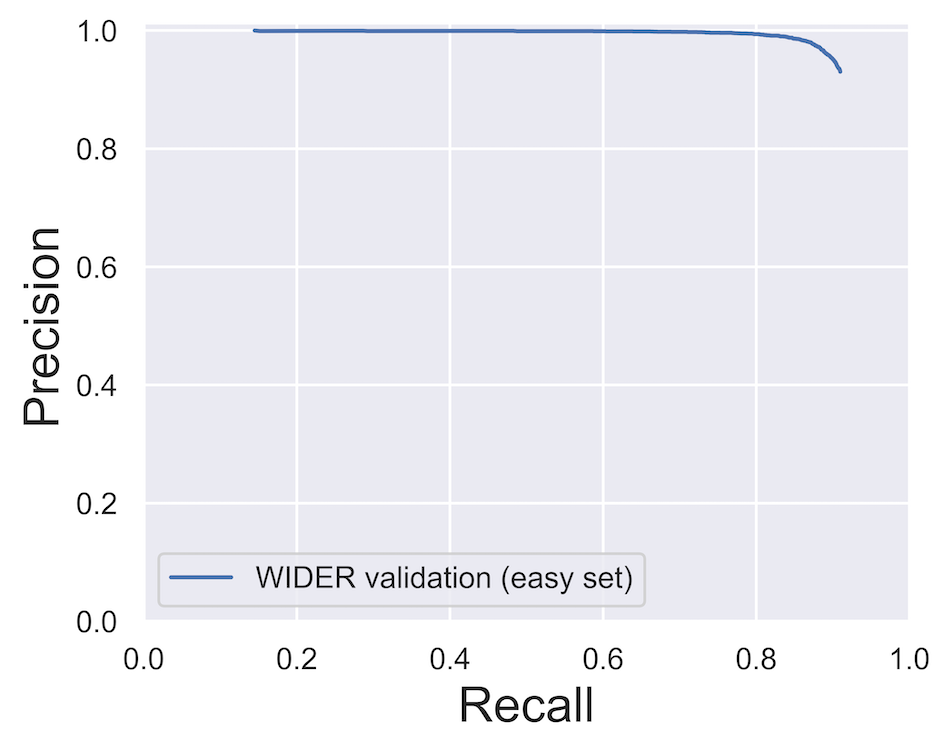
The effect of face height on similarity score:
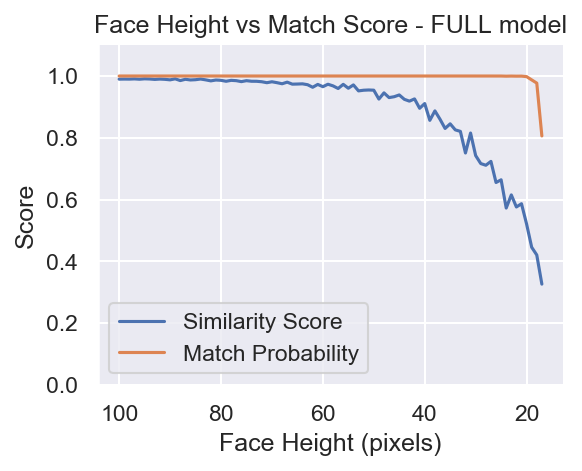
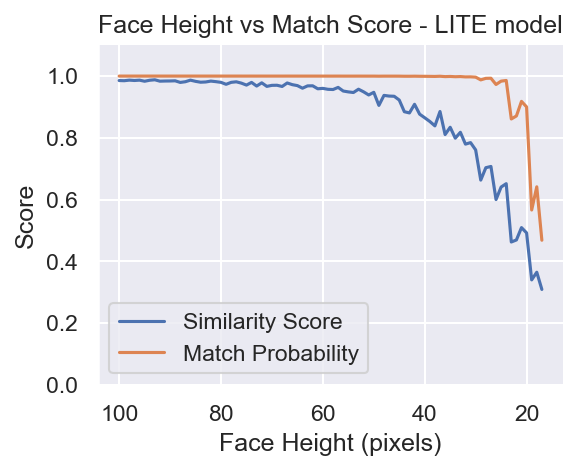
-
ErrorCode Trueface::SDK::detectLargestFace(FaceBoxAndLandmarks &faceBoxAndLandmarks, bool &found)¶
Detect the largest face in the image. This method has a small false positive rate. To reduce the false positive rate to near zero, filter out faces with score lower than 0.90. Alternatively, you can use the
Trueface::FaceDetectionFilterconfiguration option to filter the detected faces. See detectFaces() for the detection scale range.- Parameters
faceBoxAndLandmarks – [out] the FaceBoxAndLandmarks containing the landmarks and bounding box of the largest detected face in the image.
found – [out] whether a face was found in the image.
- Returns
error code, see ErrorCode.
-
ErrorCode Trueface::SDK::getFaceLandmarks(const FaceBoxAndLandmarks &faceBoxAndLandmarks, Landmarks &landmarks)¶
Obtain the 106 face landmarks.
- Parameters
faceBoxAndLandmarks – [in] FaceBoxAndLandmarks returned by detectFaces() or detectLargestFace().
landmarks – [out] an array of 106 face landmark points.
- Returns
error code, see ErrorCode.
The order of the face landmarks:
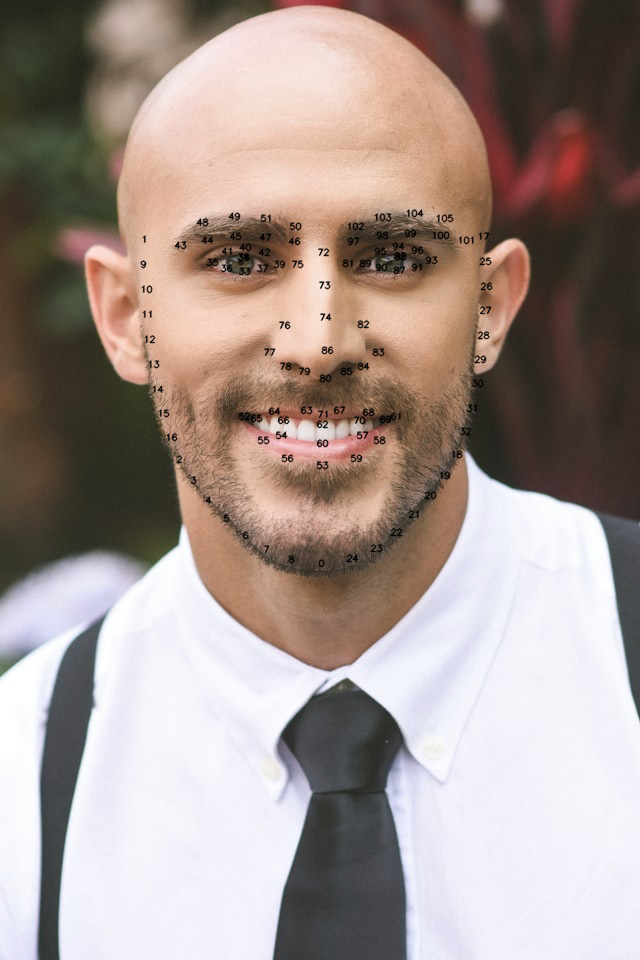
-
ErrorCode Trueface::SDK::extractAlignedFace(const FaceBoxAndLandmarks &faceBoxAndLandmarks, uint8_t *faceImage, int marginLeft = 0, int marginTop = 0, int marginRight = 0, int marginBottom = 0, float scale = 1.0)¶
Align the the detected face to be optimized for passing to feature extraction. If using the face chip with Trueface algorithms (ex face recognition), do not change the default margin and scale values.
- Parameters
faceBoxAndLandmarks – [in] the FaceBoxAndLandmarks returned by detectLargestFace() or detectFaces().
faceImage – [out] the pointer to a uint8_t buffer of 112x112x3 = 37632 bytes (when using default margins and scale). The aligned face image is stored in this buffer. The memory must be allocated by the user. If using non-default margin and scale (again, non-standard face chip sizes will not work with Trueface algorithms), the faceImage will be of size: width = int((112+marginLeft+marginRight)*scale), height = int((112+marginTop+marginBottom)*scale), and therefore the buffer size is computed as: width * height * 3
marginLeft – [in] adds a margin to the left side of the face chip.
marginTop – [in] adds a margin to the top side of the face chip.
marginRight – [in] adds a margin to the right side of the face chip.
marginBottom – [in] adds a margin to the bottom side of the face chip.
scale – [in] changes the scale of the face chip.
- Returns
error code, see ErrorCode.
-
void Trueface::SDK::saveFaceImage(uint8_t *faceImage, const std::string &filepath, unsigned int height = 112, unsigned int width = 112)¶
Store the face image in JPEG file. If face image has non-standard size (112x112), must specify width and height.
- Parameters
faceImage – [in] the extracted image by extractAlignedFace().
filepath – [in] relative or absolute file path without a file extension.
height – [in] the image height, computed as int((112+marginTop+marginBottom)*scale).
width – [in] the image width, computed as int((112+marginLeft+marginRight)*scale).
-
ErrorCode Trueface::SDK::estimateHeadOrientation(const FaceBoxAndLandmarks &faceBoxAndLandmarks, float &yaw, float &pitch, float &roll)¶
Estimate the head pose.
- Parameters
faceBoxAndLandmarks – [in] FaceBoxAndLandmarks returned by detectFaces() or detectLargestFace().
yaw – [out] the rotation angle around the image’s vertical axis, in radians.
pitch – [out] the rotation angle around the image’s transverse axis, in radians.
roll – [out] the rotation angle around the image’s longitudinal axis, in radians.
- Returns
error code, see ErrorCode.
The accuracy of this method is estimated using 1920x1080 pixel test images. A test image:
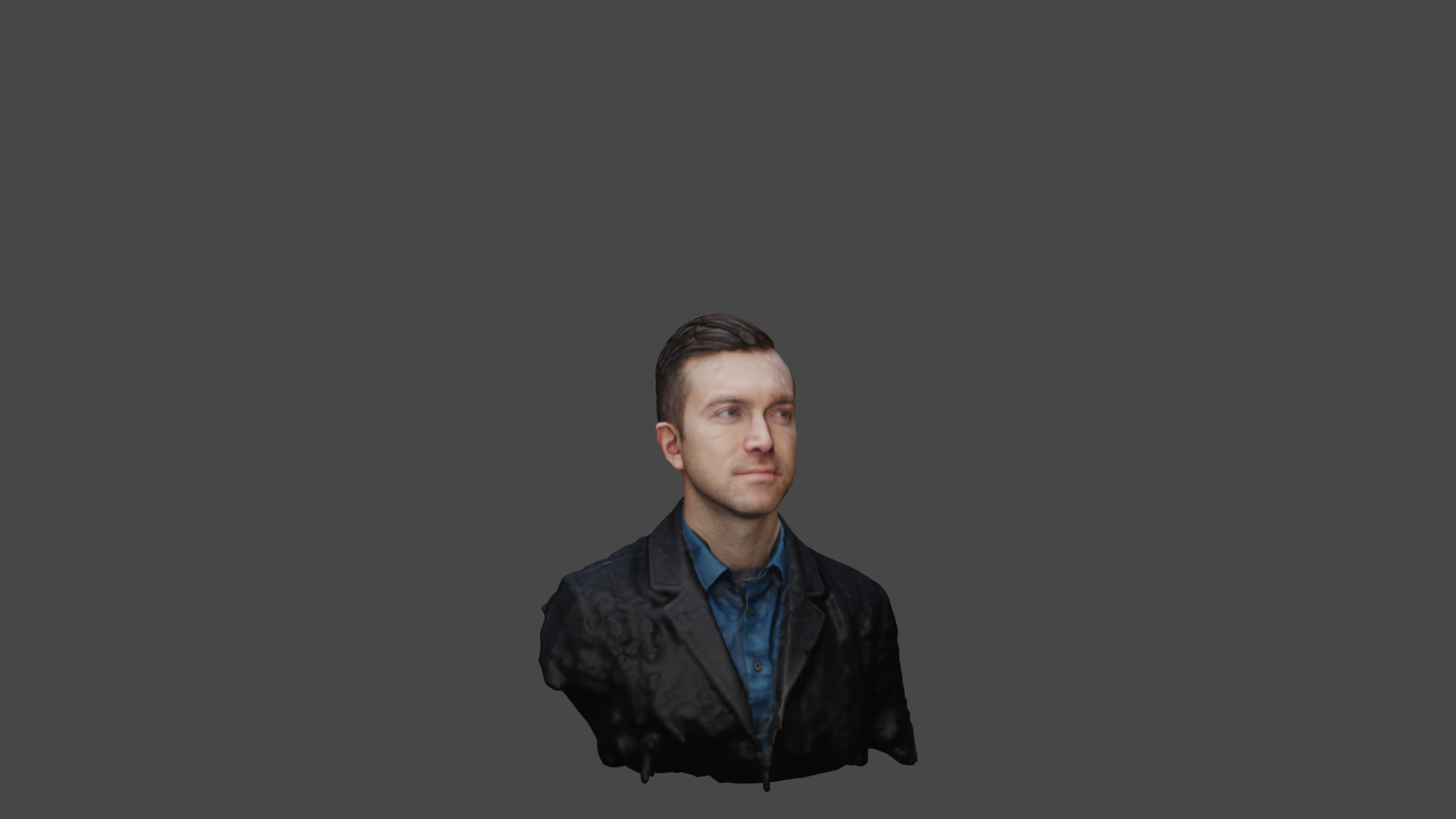
The accuracy of the head orientation estimation:

The effect of the face yaw angle on match similarity can be seen in the following figure:
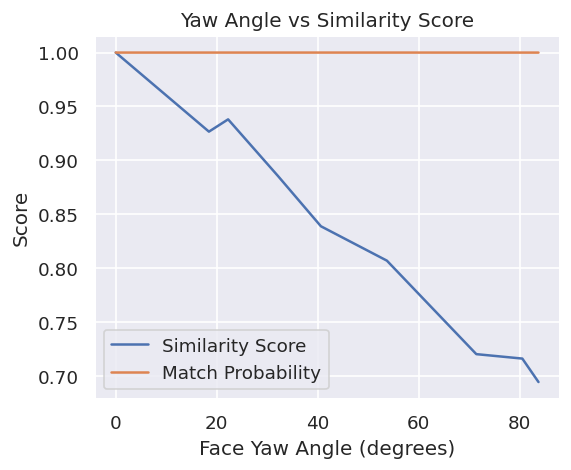
The effect of the face pitch angle on match similarity can be seen in the following figure:
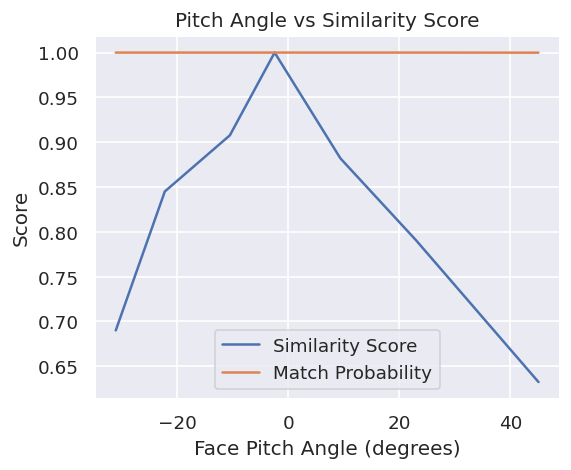
-
template<typename T>
struct Trueface::Point¶
-
struct Trueface::FaceBoxAndLandmarks¶